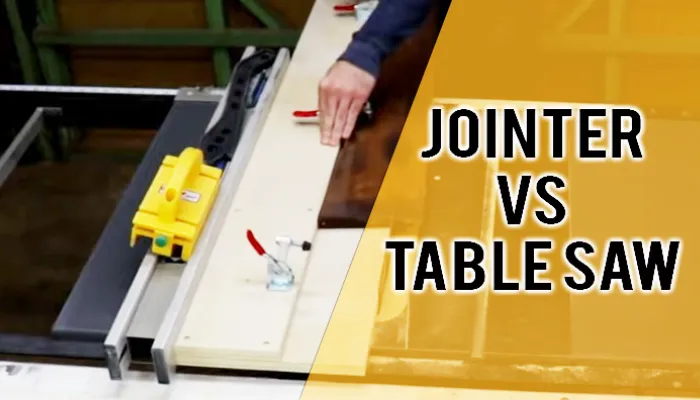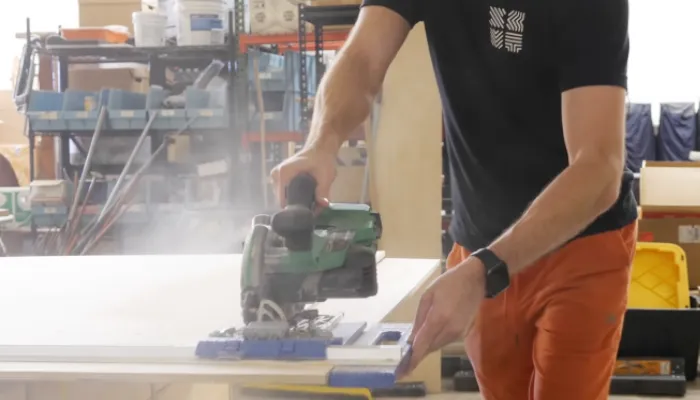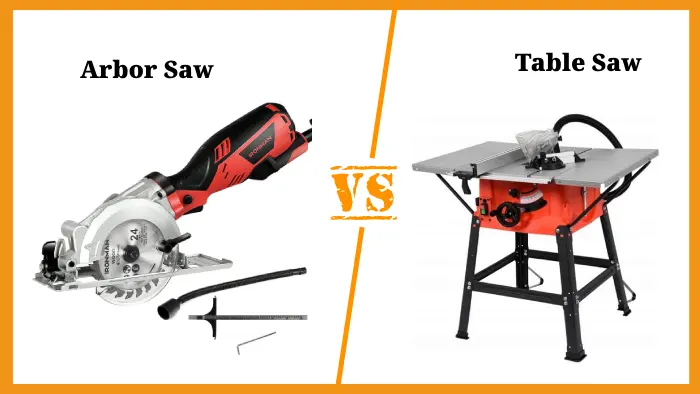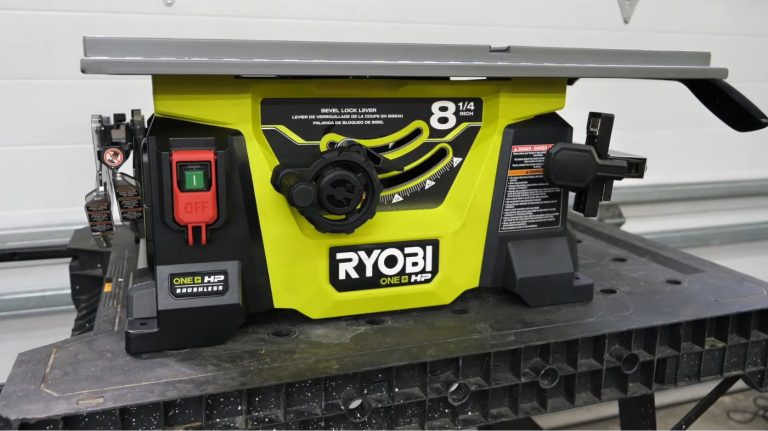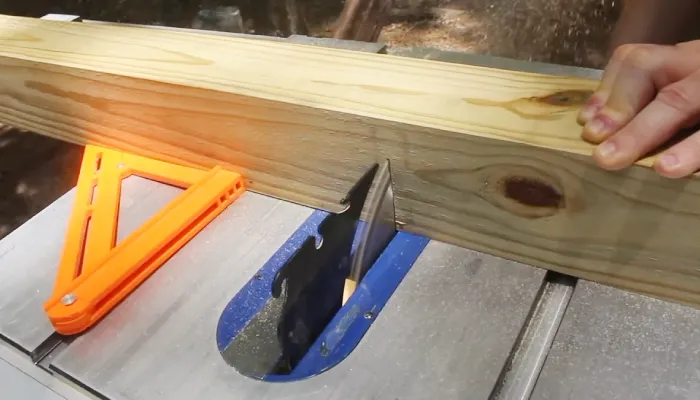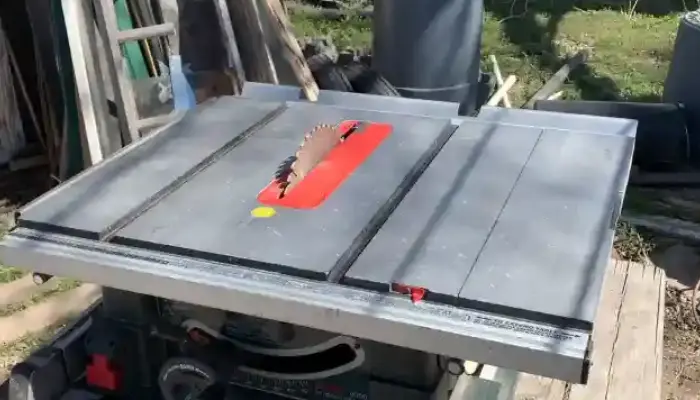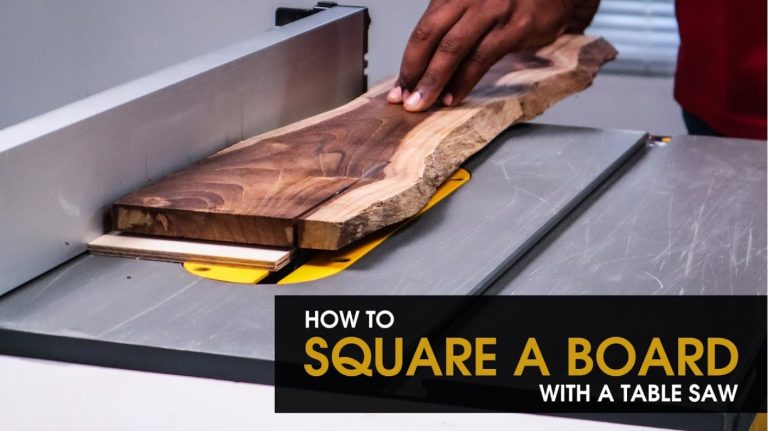Jointer vs Table Saw: 9 Key Differences
As a woodworking enthusiast, I often stand at the crossroads, deciding between the trusty jointer and the versatile table saw. These tools are like two sides of a coin, each with its unique purpose and benefits. So, after researching these two power tools extensively, I discovered several key differences between them.
Jointers have a compact and portable design, typically benchtop-mounted. These tools are primarily used for flattening and straightening wood board edges. Conversely, table saws have a larger size and a dedicated stand with a heavy-duty cast iron frame. These tools are used for cutting wood, ripping, cross-cutting, etc.
Throughout this article, I will explain the significant distinctions between the jointer and table saw and answer some questions. So, let’s explore the advantages of these indispensable tools.
- Precision 6-Inch Jointing
- Variable Speed Performance
- Helical Cutterhead for Smoothness
- Efficient Dust Collection System
- Durable Construction for Longevity
- Compact 8-1/4 Inch Design
- Precision Rack & Pinion Fence
- Advanced Site-Pro Guarding System
- Robust Metal Roll Cage
- Efficient Dust Port Design
9 Differences Between Jointer and Table Saw for Woodworking
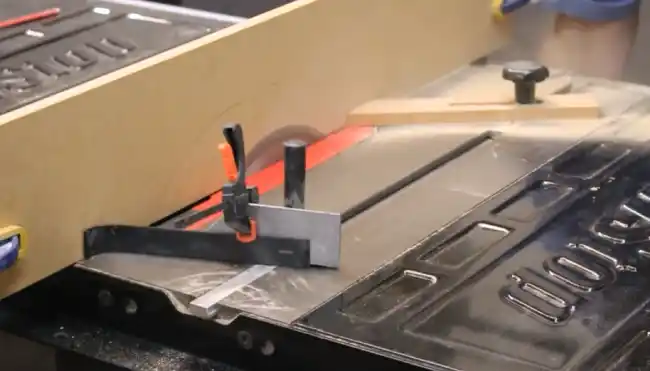
When comparing a jointer and a table saw for woodworking, here are several significant differences I’ve noticed:
- Functionality and purpose
- Size and design
- Board preparation and limitations
- Skill requirement and safety measures
- Surface quality and tear-out
- Precision and adjustability
- Versatility and project goals
- Dust generation and collection
- Cost and budget considerations
1. Working Functionality
A table saw offers a wider range of functionality and purpose than a woodworking jointer. With a table saw, you can perform ripping and cross-cutting and create different joints, such as dados, rabbets, and tenons.
It can also handle width cuts and shape timber boards at different degrees. This makes the table saw an essential tool for woodworking projects that require precision and versatility.
On the other hand, the jointer’s main function is to provide two reference surfaces for accuracy, making it ideal for quickly and accurately creating flat and perpendicular surfaces.
2. Size and Design
I prefer a jointer’s compact and portable design for woodworking projects. Jointers are typically smaller and designed for benchtop use, allowing for easy placement in a workshop. Their lower motor power, ranging from 1 to 3 horsepower, is sufficient for the tasks you need to accomplish.
Conversely, table saws are larger and feature heavy-duty cast iron frames for stability. They can efficiently cut larger pieces of wood with motor power that can go up to 5 horsepower. However, the size and weight of table saws make them less convenient for my needs.
3. Board Preparation and Limitations
Regarding board preparation, the jointer provides flat and perpendicular surfaces quickly. It can accurately join one edge and one face of a board, ensuring that they’re perfectly straight and square. However, the jointer has its limitations. It can’t flatten the entire surface of a board or address any cupping or warping issues.
This is where the table saw comes in. While it may not be designed for face flattening, it’s possible to edge join a board with a homemade jig. By utilizing the strengths of both tools, you can overcome their limitations and effectively prepare boards for my woodworking projects.
4. Skill Requirement and Safety Measures
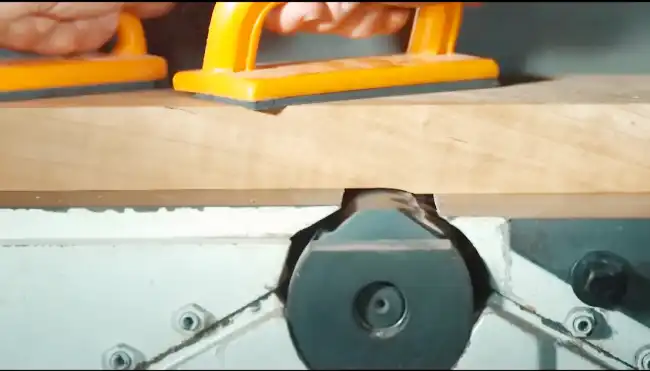
One significant difference between the jointer and table saw for woodworking is the varying skill requirements and safety measures associated with each tool.
A certain skill level is required to achieve accurate and smooth results when operating a jointer, particularly for those new to woodworking. Novices must learn how to properly feed the wood through the machine and maintain control over the material.
On the other hand, table saws also demand a certain level of skill and caution. Safety measures such as riving knives, anti-kickback pawls, and sensors in some models are in place to enhance operator safety and minimize the likelihood of injuries.
5. Surface Quality and Tear-out
A significant difference between a jointer and a table saw for woodworking is their surface quality and tear-out.
A jointer provides a flat surface, making it ideal for joinery work and ensuring strong, seamless connections. The jointer delivers smooth, clean cuts with minimal tear-out, resulting in high-quality surfaces.
However, while the table saw generally produces good-quality cuts, the surface may not be as smooth as those from a jointer. The table saw offers the advantage of using different blades for varied finishes, but tear-out can be more noticeable.
6. Precision and Adjustability
Moving on from the previous discussion, let’s examine the significant differences between a jointer and a table saw regarding precision and adjustability.
The jointer is renowned for its adjustable blades, allowing precise bevel cuts. It offers fine-tuning options that enable woodworkers to achieve specific angles and surface finishes accurately.
In contrast, the table saw boasts various adjustable features, including blade heights, blade guards, miter gauges, fences, and rails. These elements contribute to accurate measurements and ensure high precision in width cuts, angles, and various woodworking applications.
7. Versatility and Project Goals
When it comes to versatility, the table saw takes the lead. It can handle wider stock, allowing for more diverse projects. With its powerful motor and adjustable blade, the table saw is ideal for creating grooves, dados, tapers, and moldings.
On the other hand, the jointer excels at creating snug joints for stronger bonds. Its beveling and chamfering capabilities also minimize the need for excessive sanding.
Therefore, choosing between a jointer and a table saw ultimately depends on the project goals. If precision cuts and tight joints are the priority, a jointer is the tool of choice. However, the table saw is the go-to option for versatility and handling larger stock.
8. Dust Generation and Collection
When comparing the jointer and table saw’s significant differences in dust generation and collection for woodworking, I prioritize safety and efficient dust collection.
Both machines generate dust during operation, but the table saw is notorious for producing a substantial amount. Thus, robust dust collection systems must be implemented to maintain a clean and safe workspace.
Due to the nature of the jointer’s operation, a moderate amount of dust is expected, which also requires effective dust collection measures. Operators should ensure their dust extraction solutions can handle each machine’s specific dust output.
9. Cost and Budget Considerations
Jointers are generally more expensive due to their limited production, while table saws tend to cost less and have a wide range of models available.
When budget constraints are a factor, one must decide between an 8-inch jointer and a 6-inch jointer. Similarly, depending on the budget and specific woodworking needs, one can choose between a cabinet or contractor setup for table saws.
Comparison Table Between Jointer and Table Saw
| Comparison Factors | Jointer | Table Saw |
| Functionality | Limited functionality, mainly | Wide range of functionality |
| Size and Design | Compact and portable design | Larger and heavier for |
| Board Preparation | Provides flat and perpendicular | Can edge join a board with a |
| Skill Requirement | Requires a certain skill level | Requires a certain skill level |
| Surface Quality | Provides high-quality surfaces | Good-quality cuts, but |
| Precision and Adjustability | Offers adjustable blades for | Offers various adjustable |
| Dust Generation and | Generates a moderate amount of | Generates substantial amount |
| Cost and Budget | Generally more expensive | Range of models available at |
Can a table saw be used as a jointer?
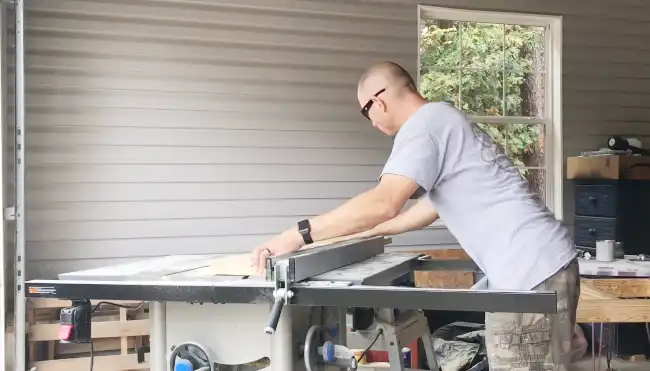
Using a table saw as a jointer is a practical and efficient way to achieve precise edge jointing. Adding a shop-made fence lets you easily perform edge jointing tasks on your table saw.
This method is especially useful when working with man-made materials like plywood, as they can be harsh on steel jointer knives but not on carbide table saw blades.
To use a table saw as a jointer, you’d set the fence parallel to the blade and adjust the blade height to the desired joint depth. Then, carefully pass the workpiece along the fence, ensuring the edge is properly aligned with the blade.
This technique allows for accurate edge jointing and can save time and effort compared to using a separate jointer machine.
Can I use a jointer on plywood?
A jointer can effectively be used on plywood by adjusting the depth of the cut and ensuring proper alignment with the workpiece.
However, it’s important to note that most plywood uses a urea-formaldehyde adhesive, which is very hard and can potentially damage the jointer blades. Therefore, it’s recommended to use caution when working with plywood on a jointer. Plywood made with a softer PVA adhesive can be safely joined.
Making multiple shallow passes rather than a single deep cut is also advisable to minimize the risk of damaging the blades. Additionally, ensuring that the workpiece is securely held and properly supported throughout the jointing process is crucial for achieving accurate and clean results.
What is the advantage of a jointer?
I find that a jointer provides the advantage of achieving precise and smooth edges on my wood, allowing for seamless joinery and enhancing the overall quality of my finished pieces.
The jointer’s ability to flatten and square the edges of rough lumber ensures that the pieces fit together perfectly, creating strong and durable joints.
By removing imperfections, such as twists, bows, or warps, the jointer ensures that the wood is straight and true, resulting in a more professional and polished appearance. The precise edge the jointer creates also minimizes the sanding.
What is a table saw best used for?
A table saw is the best tool for making precise, straight cuts on various materials in woodworking projects. This versatile power tool can also cut small and longboards with exceptional accuracy and smoothness.
Unlike handheld or machine saws, a table saw provides the stability and control needed for more intricate DIY projects requiring higher precision. Its innovative design allows for the adjustment of cutting angles and depths, ensuring the desired outcome for each cut.
The table saw excels at creating clean, straight edges, making it ideal for ripping boards, crosscutting, and making miter cuts.
Can a table saw substitute for a jointer in certain situations?
Using a homemade jig, you can achieve a straight and smooth edge on a table saw, making it a possible substitute for a jointer in certain situations.
Edge jointing, which involves creating a straight and smooth edge on a board, can be accomplished by carefully guiding the board along the table saw’s fence using the homemade jig. The jig acts as a guide, ensuring the board is held securely and the cut is made accurately.
However, note that a table saw has limitations compared to a jointer. While it can effectively perform edge jointing, it isn’t suitable for flattening the faces of boards. This task requires the use of a jointer, which is specifically designed to flatten surfaces.
Jointer or Table Saw: Choose the Right Tool According to Your Needs
Differences between a jointer and a table saw are significant, and choosing the perfect one depends on individual circumstances, project goals, and budget constraints.
While a table saw may have some limited jointing capabilities, I assure you it cannot provide the precision and accuracy of a jointer. The advantages of a jointer, such as creating smooth, flat surfaces, are unmatched by any other tool. However, a table saw is best used for cutting and shaping wood.
While it may be able to substitute for a jointer in certain situations, it does not achieve the same level of perfection. Ultimately, when choosing these tools, your woodworking style, project requirements, and workspace should all be considered.
- Precision Woodworking at 22,000 CPM
- Powerful 10 Amp Motor
- Cutting-Edge Technology for Accuracy
- Durable Construction for Longevity
- Versatile Blades for Endless Creativity
- Powerful 15 Amp Motor
- Versatile 10-inch Carbide Blade
- Precision Rack and Pinion Fence
- Durable Construction for Stability
- User-Friendly Portable Design
Last update on 2025-12-16 / Affiliate links / Images from Amazon Product Advertising API

